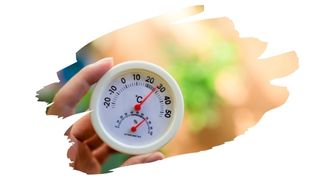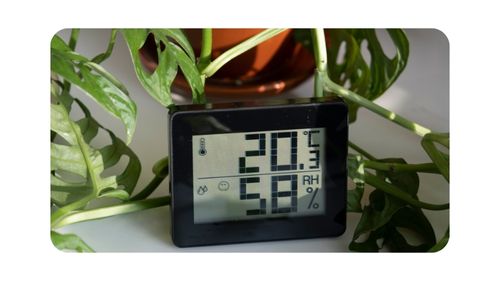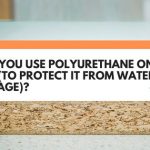Polyurethane is a widely used wood sealer designed to help protect wood from scratches and water-damage. But, before polyurethane can properly safeguard wood, it needs to dry (and cure) into a durable coat.
But what are the ideal drying conditions for applying polyurethane? And can the moisture in humid air prevent even quick drying water-based polyurethane from curing?
Well, in this post you’ll find out what’s likely preventing that polyurethane coat from curing. You’ll also learn why high humidity not only prevents polyurethane from drying, but it can also make it ‘blush’ too.
And keep reading to discover which two devices can help you manage humidity around your polyurethane coated wood craft.

This post may contain affiliate links to products that we receive a commission for (at no additional cost to you). Learn more here.
Why Is My Polyurethane Finish Still So Tacky After 24 Hours?
If polyurethane isn’t drying, the problem is typically one of the three T’s; Time, Temperature, or Thickness.
- Time
Polyurethane needs time to both dry and cure.
Drying is all about evaporation, a process that turns polyurethane from a liquid into a soft film. This usually takes a few hours or so (depending on the brand).
Curing, however, takes a bit longer. Through a chemical reactive process, polyurethane transforms into a durable hard-wearing substance.
And, in the case of curing, it can take 24-72 hours for polyurethane to cure (depending on the environment).
- Temperature
In perfect conditions, polyurethane should be left to cool its heels at around room temperature.
But, the lower the temperature, the longer it’ll take for polyurethane to dry.
At a little above freezing — around 41°F (5°C) — polyurethane can take over three times longer to dry.
- Thickness
Applying polyurethane too thickly will hamper its ability to dry. Especially when it comes to oil-based polyurethanes, which take longer to dry than their water-based counterparts.
Related Post: Polyurethane Not Drying? What You Can Do To Fix It
So How Warm Does It Have To Be For Polyurethane To Dry?
A little above room temperature is best, between 70°F (21°C) to 77°F (25°C).
However, you don’t want to go too far above that. This is because blasting polyurethane with too much heat can cause air bubbles.
Related Post: Can You Avoid Dried Air Bubbles Appearing In Your Polyurethane Finish?
OK. But What About Humidity? What Humidity Level Is Too High For Polyurethane?
Anything above 70% RH (Relative Humidity), and the air will be too thick with moisture for this finish to dry.
So ideal temperature conditions should be coupled with moderate relative humidity levels.
Ideally, somewhere within a 45% RH to 60% RH range is perfect for polyurethane. But definitely no less than 40% RH and no higher than 70% RH.
But Does Humidity Really Affect Water-Based Polyurethanes Ability To Dry?
Very much so. In fact, it also effects oil-based polyurethanes too.
That’s because — besides hindering drying — high levels of humidity can turn polyurethane finishes permanently cloudy.
This effect is known as ‘blushing’.
Now, blushing can occur if the moisture from high-humidity manages to get into polyurethane before it can cure. Which is something that will happen if you dry a poly finish in very humid conditions.
So What Can You Do If Its Too Humid For Still-Wet Polyurethane?
Your only real option is to move that polyurethane covered piece into a room with a dehumidifier.
Use the dehumidifier to manage the humidity levels in the area. And then keep track of the RH levels using a digital hygrometer.
Digital hygrometers let you monitor the level of humidity in any given space or area.

And AcuRite has a compact digital hygrometer that measures not only humidity, but also temperature in both Fahrenheit or Celsius.
And it can measure relative humidity levels between 21% RH to 80% RH (within 3% +/- accuracy).
To Wrap Up, Here Are The 3 Key Takeaways From This Post…
- 1). Polyurethane cannot dry if the humidity in the air is above 70% RH (relative humidity).
- 2). If you want polyurethane to dry, use a dehumidifier to help keep things at a 45% RH to 60% RH range.
- 3). You can use a digital device called a Digital Hygrometer to help monitor and check humidity levels in the air.



